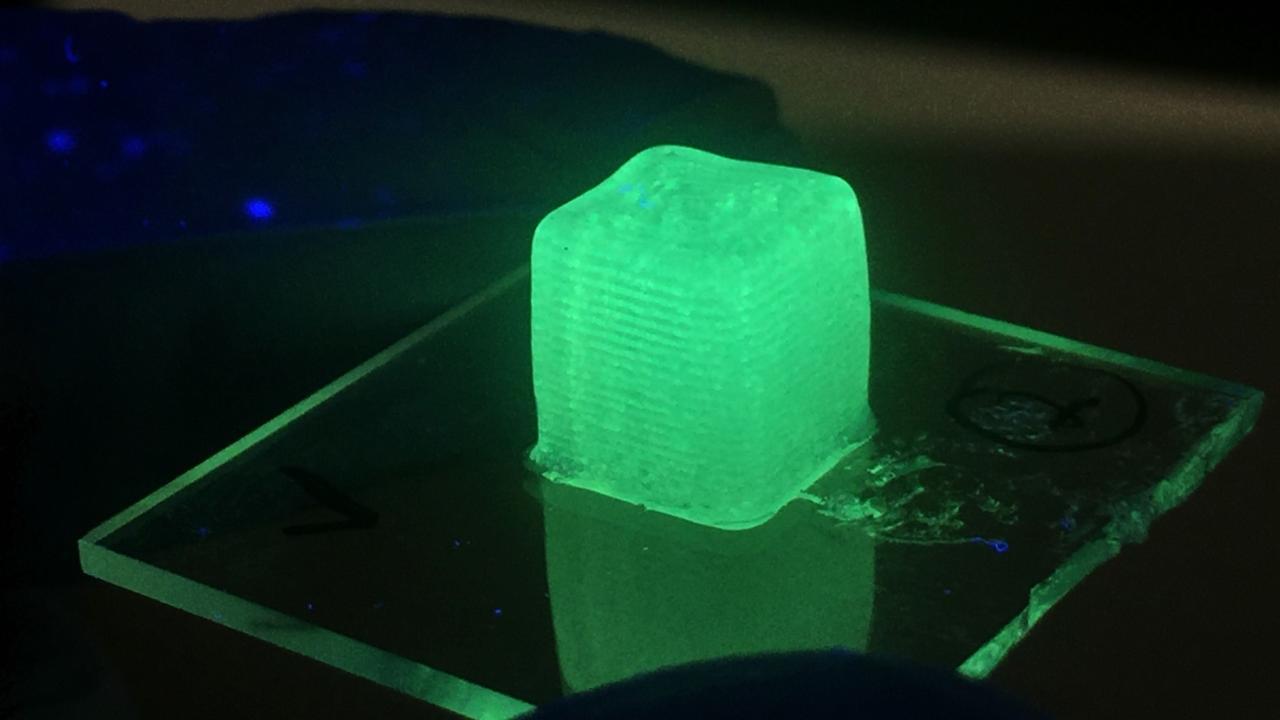
Congratulations Toby Mea for Publishing in PNAS
Congratulations Toby Mea for Publishing in PNAS. Learn more about his work, On-demand modulation of 3D-printed elastomers using programmable droplet inclusions, here. Below is more information about the field & inspiration behind the work.
Chemical engineering assistant professor Jiandi Wan has developed a new approach to 3D printing using microfluidics, which was outlined in a new paper published in the Proceedings of the National Academy of Sciences of the United States (PNAS). By using a droplet-based, multi-phase microfluidic system, his group was able to efficiently print finely-tuned flexible materials with potential applications in soft robotics, tissue engineering and wearable technology.
In traditional extrusion-based 3D printers, printing material is pushed through a nozzle and added to the structure repeatedly until the product is complete. While this is efficient and cost-effective, it makes it hard to print structures made of more than one material and getting the right amount of softness can be challenging.
Wan’s group noticed that this nozzle was similar to the glass capillary microfluidic devices they had been studying, which involve multiple nozzles placed inside of each other, and realized they had a new application for the technology.
“Most extrusion-based 3D printers use very simple nozzles and since we had already developed these glass microfluidics, we thought, ‘why not apply it to 3D printing?’” said Wan.
Wan’s device uses a multi-phase drip system to encapsulate droplets of an aqueous polyethylene glycol diacrylate (PEGDA) solution inside of a common silicon-based organic polymer called polydimethylsiloxane (PDMS). The PDMS flows around a dripper, which makes tiny droplets of the PEGDA that it evenly inserts into the PDMS as both materials flow onto the structure that’s being printed.
The resulting structure looks like a Pac-Man maze, with little dots of PEGDA droplets surrounded by PDMS. Once the PEGDA diffuses out of the droplets, it interferes with the polymerization process of PDMS, chemically softening the material and making the structure more flexible.
“You can also encapsulate other chemicals in the droplets to make the overall matrix much softer or harder,” he said.
Wan and his team also showed that the droplet-based 3D printing can be used to produce flexible porous constructs and constructs with encapsulated polymer particles and metal droplets. In addition, the structure flexibility can be easily tuned by changing the droplet size and flow rate. This gives researchers a wide range of options to truly design their material structure and vary flexibility to fit their needs in a way that’s difficult with the nozzle-based method.
Though microfluidic-based 3D printing has been done before, Wan’s group is the first to use this droplet-based multiphase emulsion approach. The team is already looking into potential applications and learning what other combinations of materials they can use to change the mechanical or chemical properties of 3D-printed products. They think the work could have applications in bioprinting and wearable electronics like smart fabrics.
“I think this will open a new area of research, since applying the established microfluidics technology to 3D printing represents a new direction to go,” he said.
PNAS is the official journal of the National Academy of Sciences and one of the most-cited, highest-impact and most selective scientific journals in the world. The article, led by Ph.D. student Toby Mea and titled, “On-demand modulation of 3D printer elastomers using programmable droplet inclusions,” is available at PNAS’ website.
“It’s really hard to get a paper published there, so my students and I are quite excited,” he said. “We’re excited by the novelty of this paper and its potential applications.”
Article can be found here.